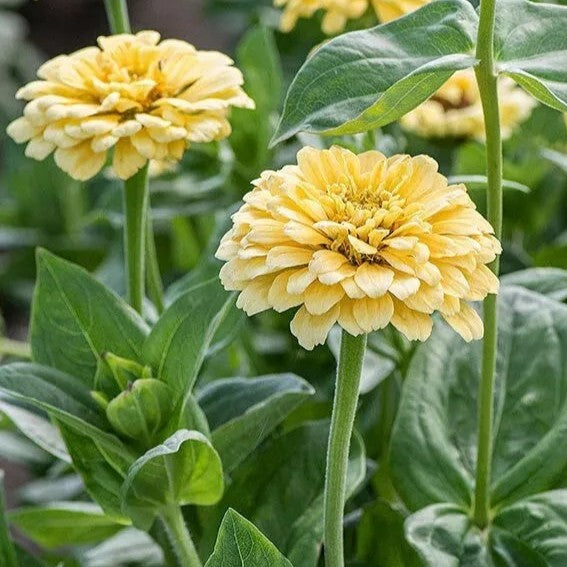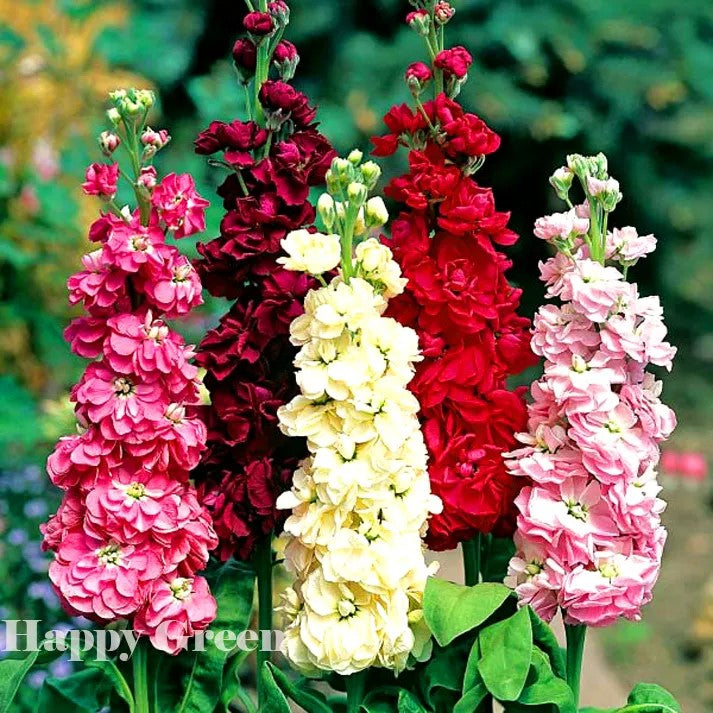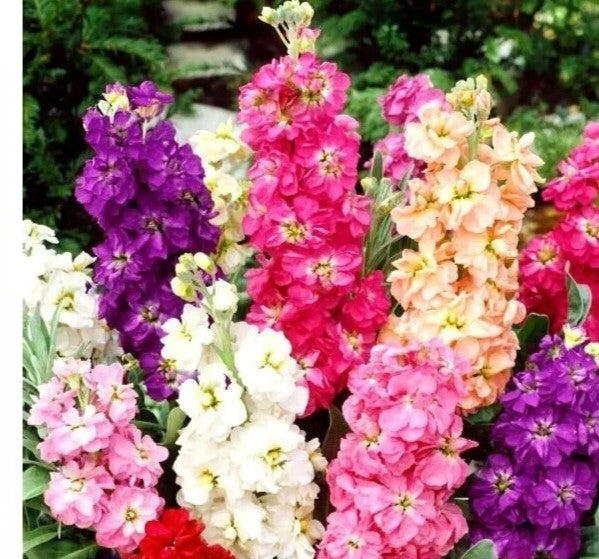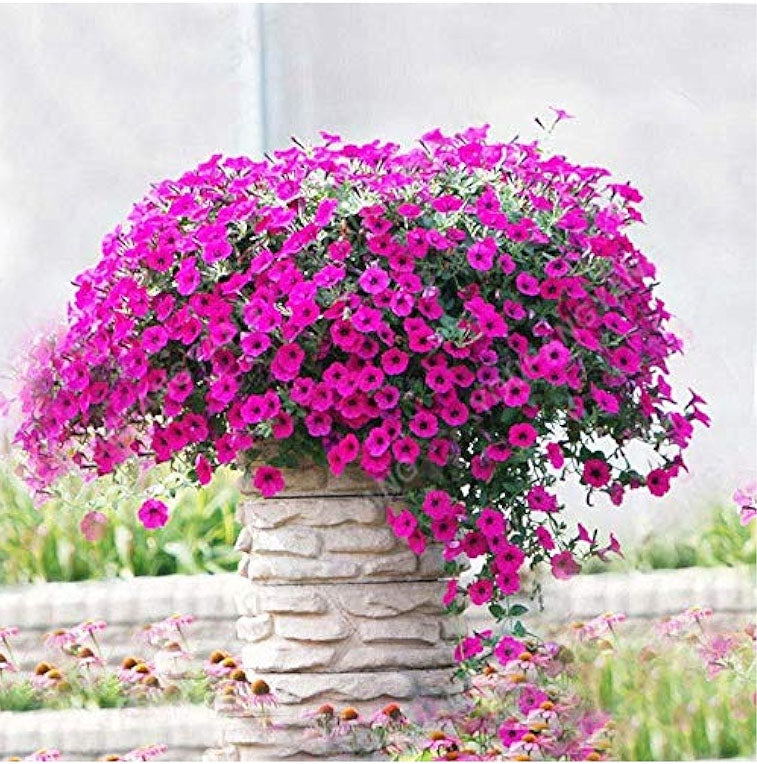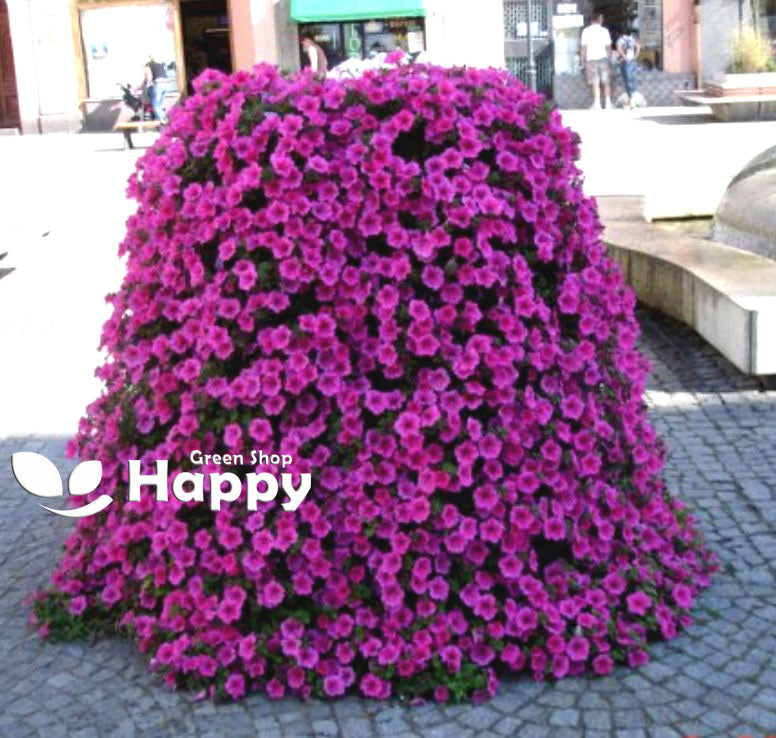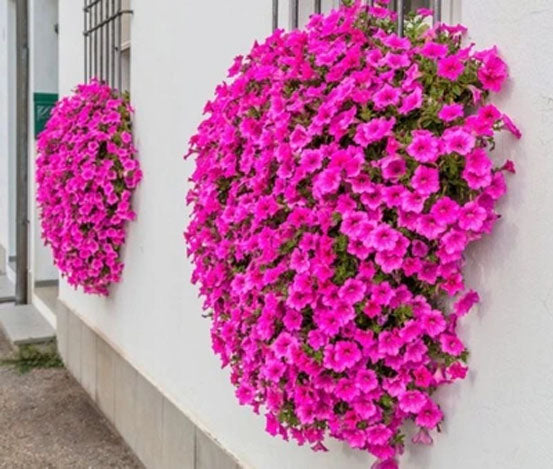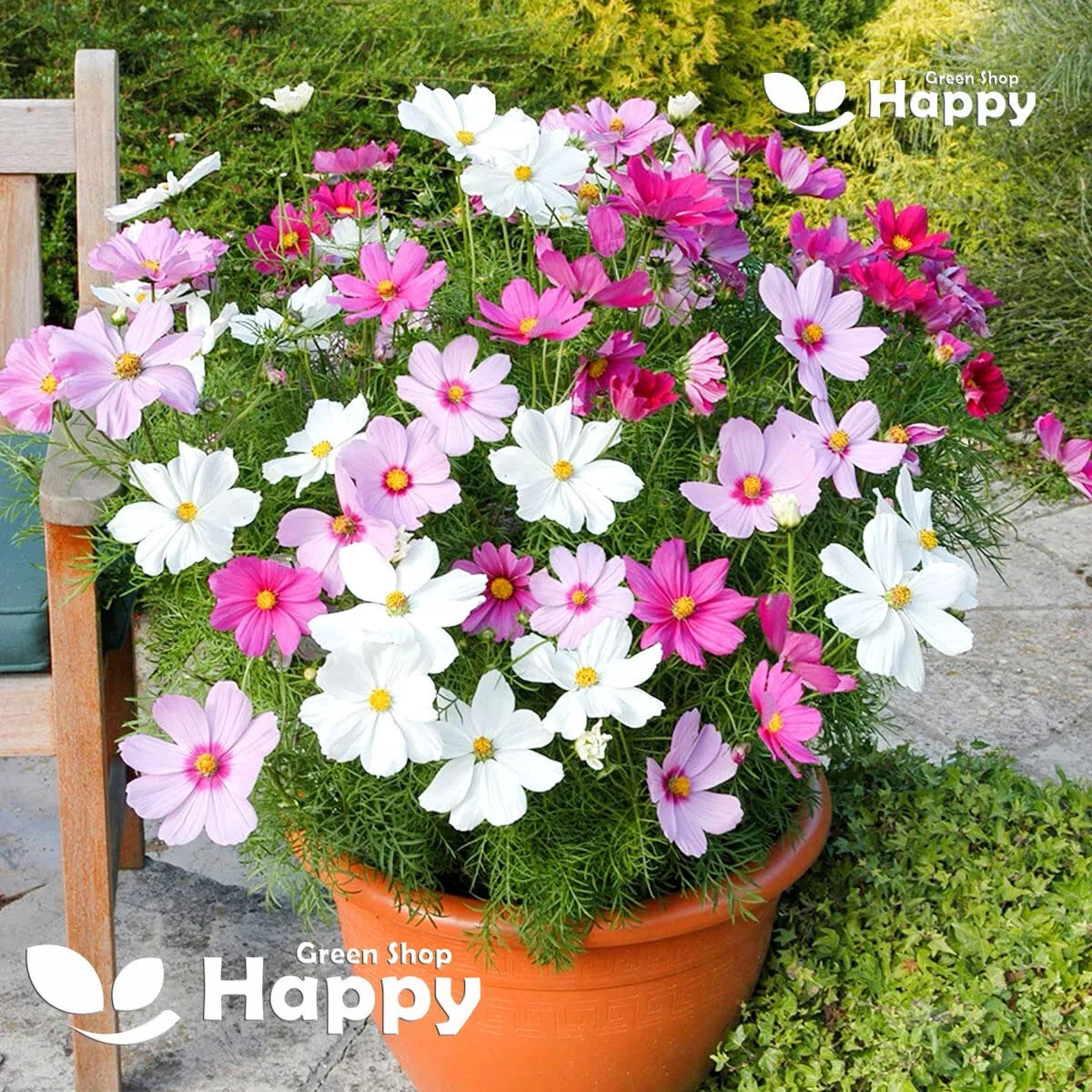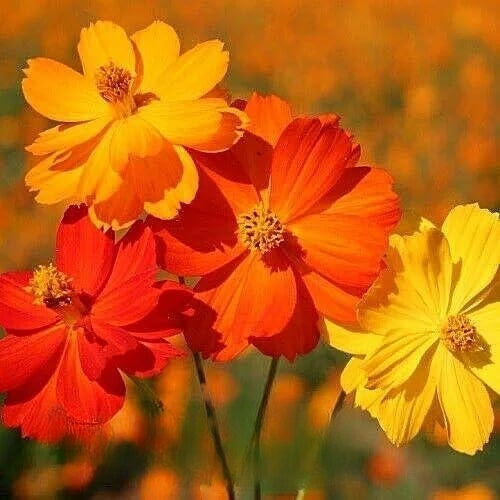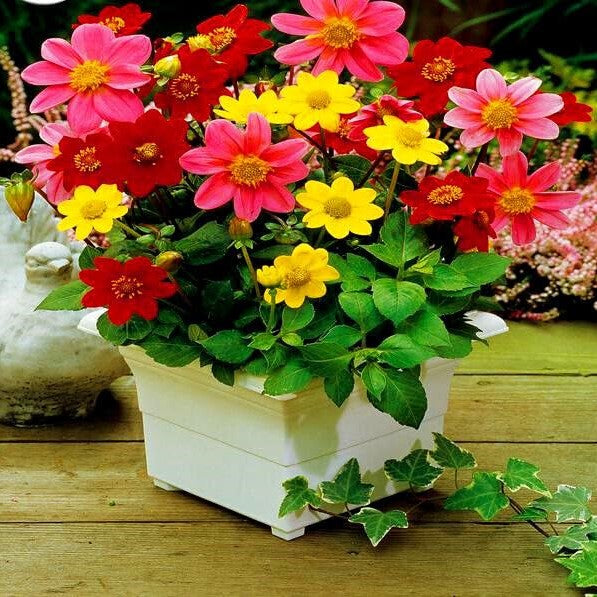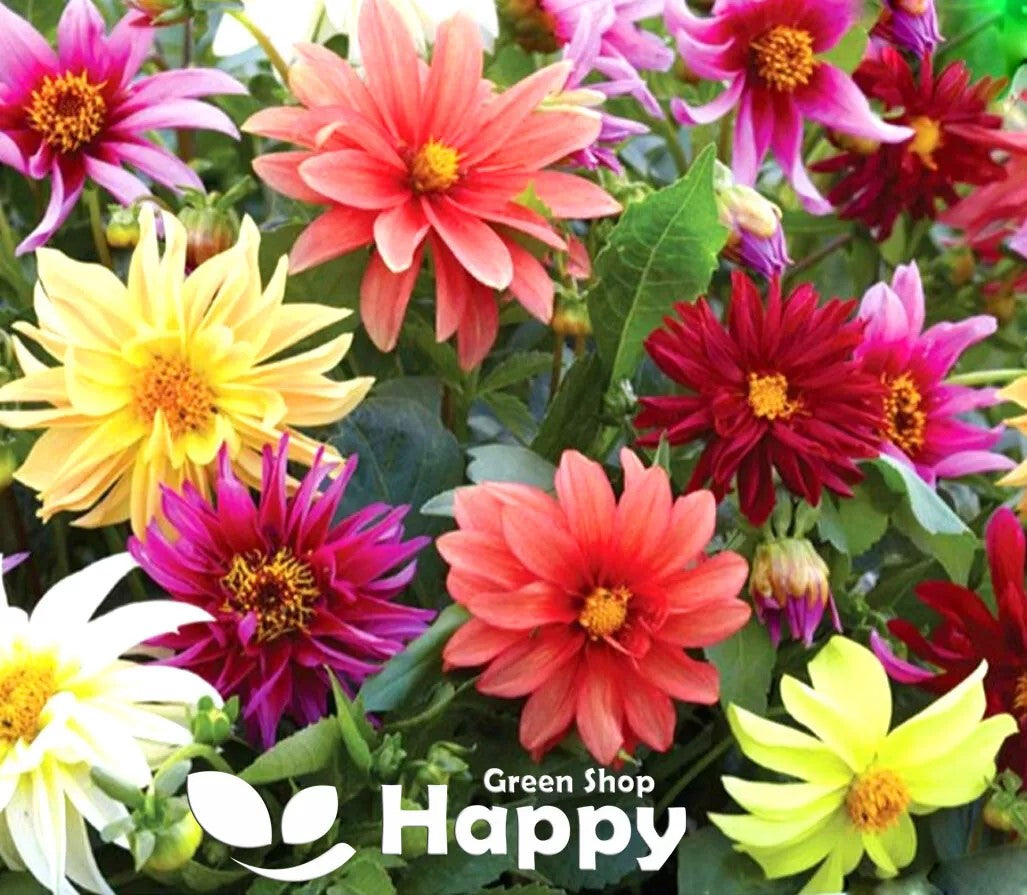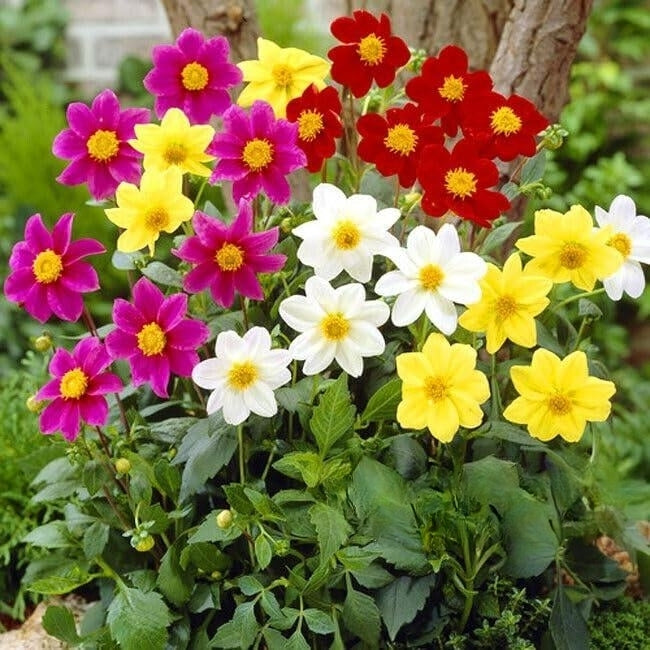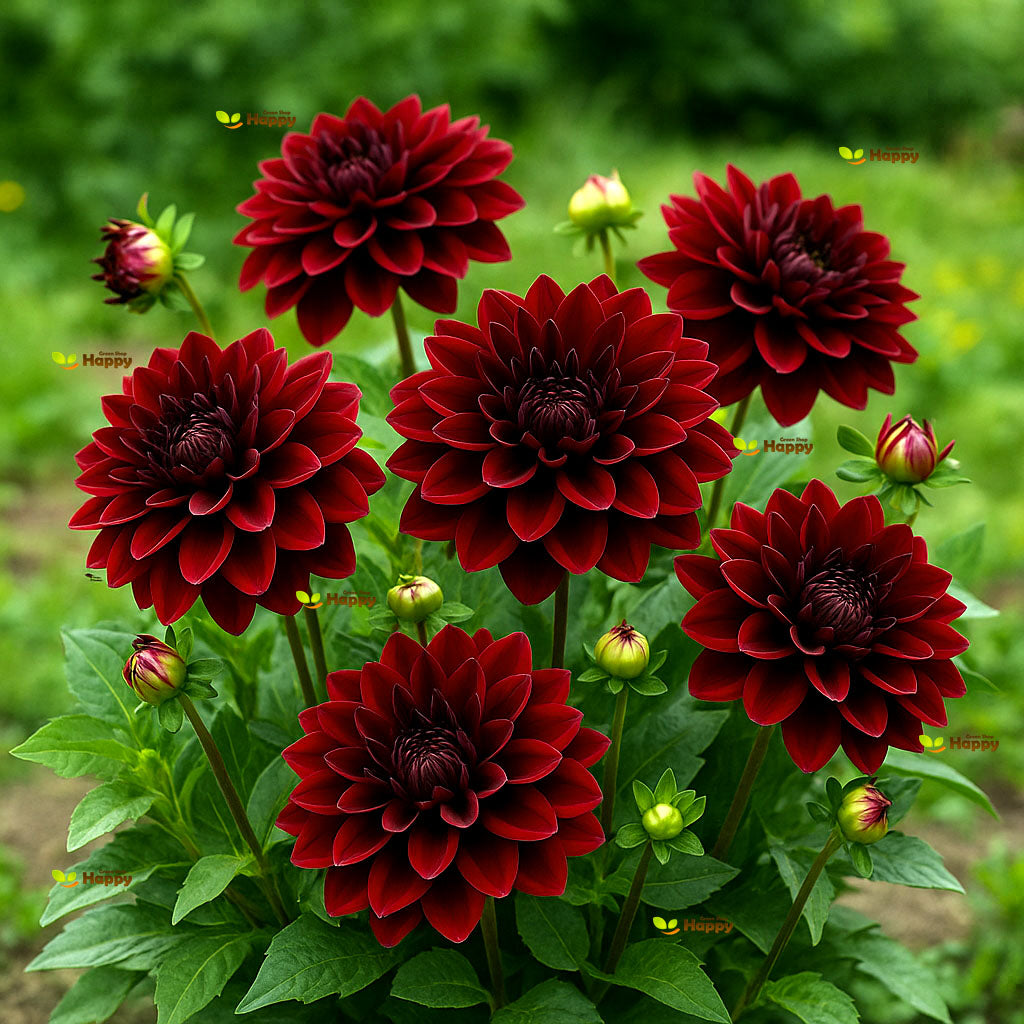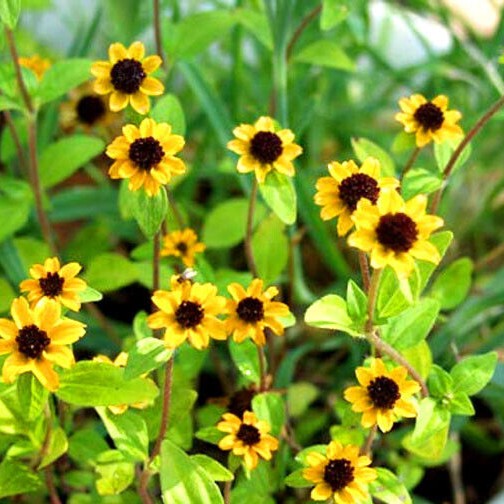Sort by:
95 products
95 products
Dwarf Stock ‘Brompton Winter’ – Seeds (Matthiola incana)
Dwarf Stock ‘Brompton Winter’ (Matthiola incana) is a charming annual producing fragrant, compact clusters of flowers in shades of pink, white, and lavender. Blooming from late autumn to early spring, it adds color and scent to borders, containers, and cottage gardens during the cooler months. Easy to grow and low-maintenance, this variety attracts pollinators and is perfect for creating a cheerful winter or early spring display.
Why Grow "Brompton Winter"
-
Fragrant, compact flower clusters in pink, white, and lavender
-
Blooming season from late autumn to early spring
-
Low-maintenance, hardy annual
-
Pollinator-friendly and ideal for winter color
Key Features
-
Type: Annual (Matthiola incana)
-
Height: 25–35 cm
-
Flowering: Late autumn to early spring
-
Position: Full sun to partial shade
-
Uses: Borders, containers, cottage gardens, pollinator-friendly planting
Ideal For
-
Adding winter and early spring color to borders and beds
-
Container and window box planting
-
Pollinator-friendly garden schemes
-
Low-maintenance fragrant displays
Sowing & Growing
-
Sow indoors: August–October in trays or pots
-
Sow outdoors: September–November directly in soil (mild climates)
-
Germination: 7–14 days at 15–20°C
-
Thin seedlings 20–25 cm apart
-
Prefers well-drained soil in full sun to partial shade
-
Water moderately until established
Dwarf Petunia ‘Rose Of Heaven’ – Seeds (Multiflora Series, Petunia multiflora)
The Dwarf Petunia ‘Rose Of Heaven’ is a compact, bushy variety producing soft pink, delicate blooms in abundance throughout the summer. Its tidy growth habit makes it perfect for borders, containers, and window boxes, bringing long-lasting charm and color to any garden space.
What Makes It Special
-
Soft pink, abundant flowers that create a romantic garden effect
-
Compact, dwarf habit ideal for small spaces and containers
-
Continuous summer flowering for long-lasting display
-
Easy to grow and highly decorative
Key Features
-
Botanical name: Petunia multiflora
-
Variety: Dwarf ‘Rose Of Heaven’, Multiflora Series
-
Seed count: Approx. seeds per pack
-
Height: 20–25 cm
-
Position: Full sun; fertile, well-drained soil
-
Flowering period: June–October
Ideal For
-
Garden borders and edging
-
Patio pots and containers
-
Window boxes and hanging baskets
-
Adding soft color to small garden spaces
Sowing Instructions
-
When to sow: February–April indoors
-
How to sow:
-
Surface sow on moist seed compost
-
Press lightly; do not cover
-
Keep at 20–24°C; germination 10–21 days
-
-
After germination:
-
Transplant seedlings into individual pots once large enough
-
Harden off before planting outdoors after last frost
-
Space 20 cm apart
-
Dwarf Cosmos Early 'Vega' Mix – Seeds (Cosmos bipinnatus)
The Dwarf Cosmos Early 'Vega' Mix is a compact, early-flowering variety of cosmos that produces masses of cheerful, daisy-like blooms in shades of white, pink, and carmine-red. Unlike tall cosmos, 'Vega' grows into neat, bushy plants that stay compact, making it ideal for borders, bedding, patio pots, and containers. This easy-to-grow annual flowers quickly and blooms continuously throughout the summer.
Highlights
-
Dwarf and bushy growth, perfect for smaller spaces
-
Large, bright daisy-like blooms in mixed shades
-
Early-flowering variety for a longer display
-
Low-maintenance and drought-tolerant once established
Key Features
-
Botanical Name: Cosmos bipinnatus
-
Variety: Dwarf Early 'Vega' Mix
-
Seed Count: Approx. seeds per pack
-
Height/Spread: 25–40 cm tall, 20–30 cm spread
-
Position: Full sun, well-drained soil
-
Flowering Period: June–October
Perfect For
-
Patio pots and containers
-
Bedding and borders
-
Compact cottage garden displays
-
Long-lasting cut flowers
Sowing Instructions
-
Sow indoors March–April at 18–21°C
-
Cover seeds lightly with compost or vermiculite
-
Germination: 7–10 days
-
Transplant outdoors after frost risk has passed, spacing 20–25 cm apart
-
Can also be sown directly outdoors April–May
Dwarf Cosmos 'Carpet' Mix – Seeds
(Cosmos sulphureus semidouble)
Dwarf Cosmos 'Carpet' Mix produces compact, bushy plants covered in a dazzling blend of orange, yellow, and red semi-double blooms. Unlike taller cosmos varieties, this dwarf mix stays low, creating a brilliant “carpet” of color perfect for borders, bedding, or pots. Easy to grow and tolerant of poor soil, heat, and drought, it flowers all summer long.
Key Features
-
Type: Half-hardy annual
-
Height: 25–40 cm
-
Spread: 25–30 cm
-
Flowering: June–October
-
Position: Full sun
-
Soil: Light, well-drained
Ideal For
-
Bedding displays & borders
-
Pots and containers
-
Edging paths
-
Pollinator-friendly gardens
Sowing & Growing
-
Sow indoors: March–April, germinate at 18–22°C
-
Sow outdoors: April–May after frost
-
Transplant or thin to 25–30 cm spacing
-
Deadhead regularly to extend blooming
Dahlia 'Piccolo Single Mignon' – Seeds
(Dahlia variabilis)
Dahlia 'Piccolo Single Mignon' is a charming dwarf variety that produces masses of single flowers in a wide range of bright colors. With compact, bushy plants and a long flowering period, this variety is perfect for borders, pots, and containers. The cheerful blooms attract bees and butterflies, making it a pollinator-friendly choice for any summer garden.
Key Features
-
Type: Half-hardy annual (grown from seed)
-
Height: 30–40 cm
-
Spread: 25–30 cm
-
Flowering: July–October
-
Position: Full sun
-
Soil: Fertile, well-drained
Ideal For
-
Bedding displays
-
Pots & containers
-
Borders & edging
-
Pollinator-friendly gardens
Sowing & Growing
-
Sow indoors: February–April at 18–22°C
-
Germination: 7–14 days
-
Transplant seedlings after frost, spacing 25–30 cm
-
Regular deadheading encourages continuous blooms
Dahlia dwarf ‘Starlight’ – Seeds
(Dahlia variabilis)
The Dahlia dwarf ‘Starlight’ is a charming compact variety producing an abundance of single, star-shaped blooms in shades of red, pink, and white, often with contrasting centers. With its bushy, dwarf growth habit, this dahlia is ideal for containers, borders, bedding schemes, and patio displays. A long-flowering annual, it brings a burst of color from mid-summer until the first frost.
Key Features
-
Type: Half-hardy annual
-
Height: 25–35 cm
-
Spread: 25–30 cm
-
Flowering: July–October
-
Position: Full sun
-
Soil: Moist, fertile, well-drained
Ideal For
-
Containers, pots, and patio displays
-
Bedding and border plantings
-
Pollinator-friendly gardens
-
Compact summer color displays
Sowing & Growing
-
Sow indoors: February–April, in trays at 18–22°C
-
Sow depth: 0.5 cm, cover lightly with soil
-
Transplant: Harden off and plant outdoors after last frost, spacing 25–30 cm apart
-
Care: Water regularly, deadhead faded blooms to prolong flowering
Dahlia 'Mignon Coltness' – Seeds
(Dahlia variabilis)
Dahlia 'Mignon Coltness' is a compact, free-flowering variety that produces masses of single blooms in warm shades of scarlet, orange, and yellow with golden centers. Easy to grow from seed, these bushy plants create a bold splash of summer color and are perfect for borders, edging, and containers. Loved by pollinators, they’ll keep your garden lively all season long.
Key Features
-
Type: Half-hardy annual (grown from seed)
-
Height: 40–50 cm
-
Spread: 30–40 cm
-
Flowering: July–October
-
Position: Full sun
-
Soil: Fertile, well-drained
Ideal For
-
Bedding and borders
-
Containers and pots
-
Edging paths and garden beds
-
Pollinator-friendly gardens
Sowing & Growing
-
Sow indoors: February–April at 18–22°C
-
Germination: 7–14 days
-
Transplant after frost, spacing 25–30 cm
-
Deadhead regularly for continuous flowering
Dahlia 'Bloody Mary' – Seeds
(Dahlia variabilis)
Dahlia 'Bloody Mary' is a stunning compact variety that produces vibrant, dark red, fully double blooms with a rich, velvety texture. Its bushy habit and long flowering season make it ideal for borders, containers, and mixed flower beds. This eye-catching variety is also a favorite for cut flowers, adding dramatic color to bouquets and arrangements.
Key Features
-
Type: Half-hardy annual (grown from seed)
-
Height: 40–50 cm
-
Spread: 30–40 cm
-
Flowering: July–October
-
Position: Full sun
-
Soil: Fertile, well-drained
Ideal For
-
Borders and bedding displays
-
Containers and pots
-
Cut flower arrangements
-
Pollinator-friendly gardens
Sowing & Growing
-
Sow indoors: February–April at 18–22°C
-
Germination: 7–14 days
-
Transplant after last frost, spacing 25–30 cm
-
Deadhead regularly to encourage continuous blooms
Creeping Zinnia Seeds (Sanvitalia procumbens)
Creeping Zinnia is a charming, low-growing, trailing annual with masses of small, golden-yellow daisy-like blooms with dark centers. Perfect for ground cover, hanging baskets, containers, or edging garden beds, this hardy little flower provides a cheerful carpet of color all summer long.
What Makes It Special
-
Trailing, creeping habit – great for hanging baskets and ground cover
-
Produces hundreds of miniature sunflower-like blooms
-
Heat- and drought-tolerant once established
-
Long-lasting summer color with minimal care
Key Features
-
Botanical name: Sanvitalia procumbens
-
Common name: Creeping Zinnia
-
Seed count: Approx. seeds per pack
-
Height/Spread: 15–25 cm tall, spreading up to 30–40 cm
-
Position: Full sun; well-drained soil
-
Flowering period: June–October
Ideal For
-
Hanging baskets and containers
-
Rock gardens and edging borders
-
Ground cover in sunny beds
-
Adding bright, low-maintenance summer color
Sowing Instructions
-
When to sow: March–May indoors; May–June outdoors
-
How to sow:
-
Sow thinly on the surface of moist compost and cover lightly with fine soil or vermiculite
-
Keep at 18–22°C; germination takes 7–14 days
-
-
Transplanting: Prick out seedlings when large enough; plant outside after frost
-
Care: Prefers sunny, well-drained sites; water regularly until established; thrives in poor soils.
Showing 72/95




